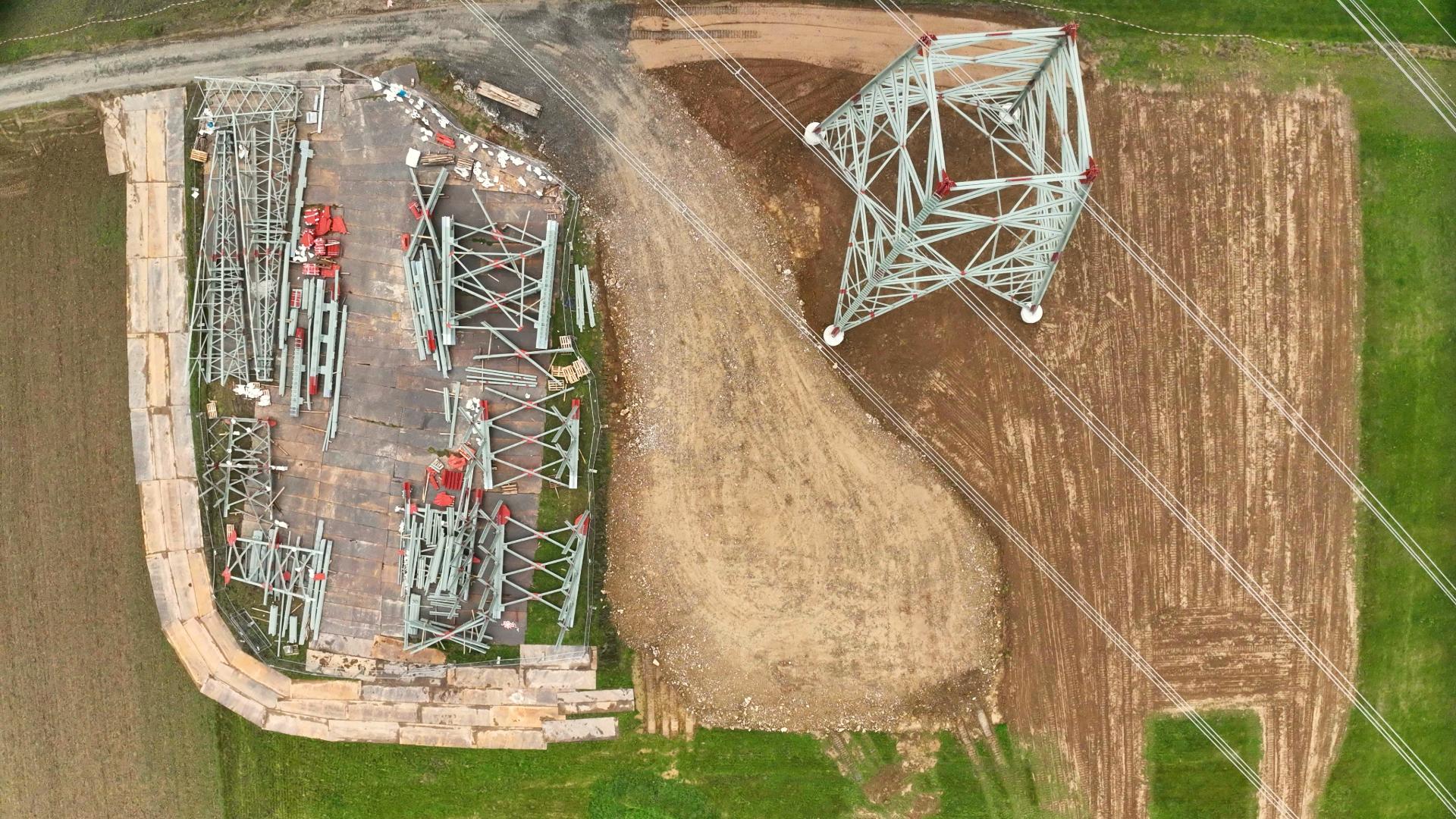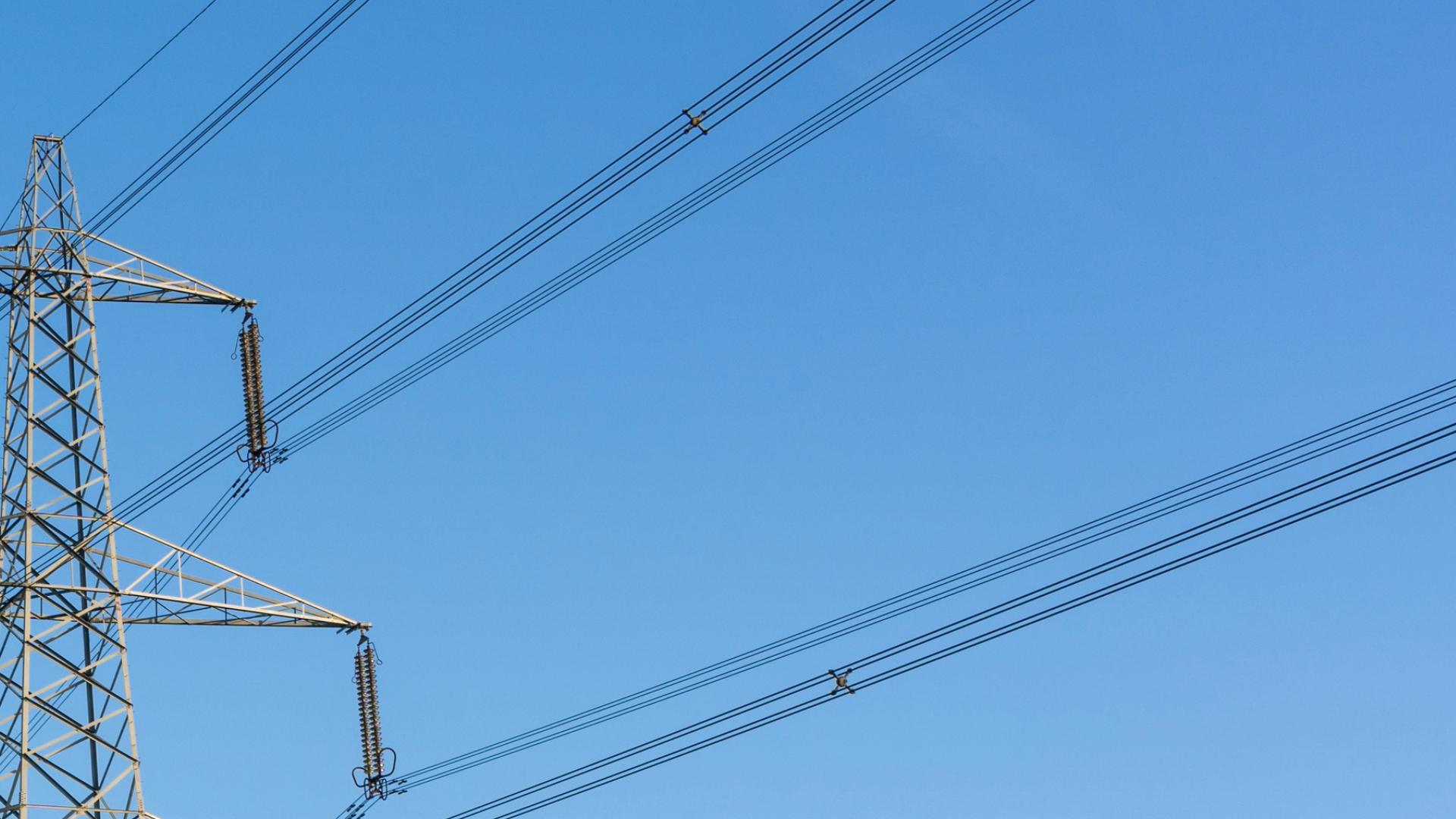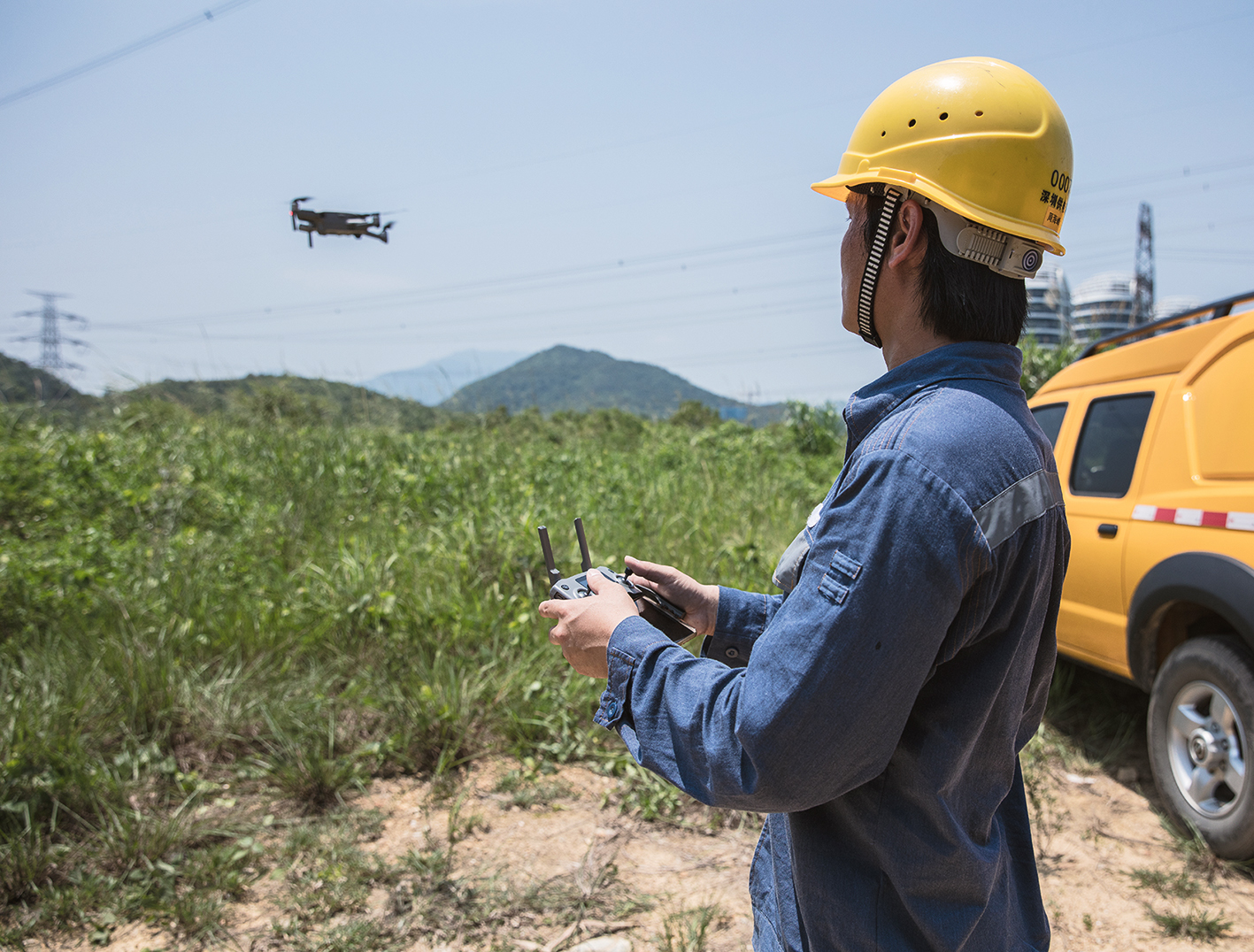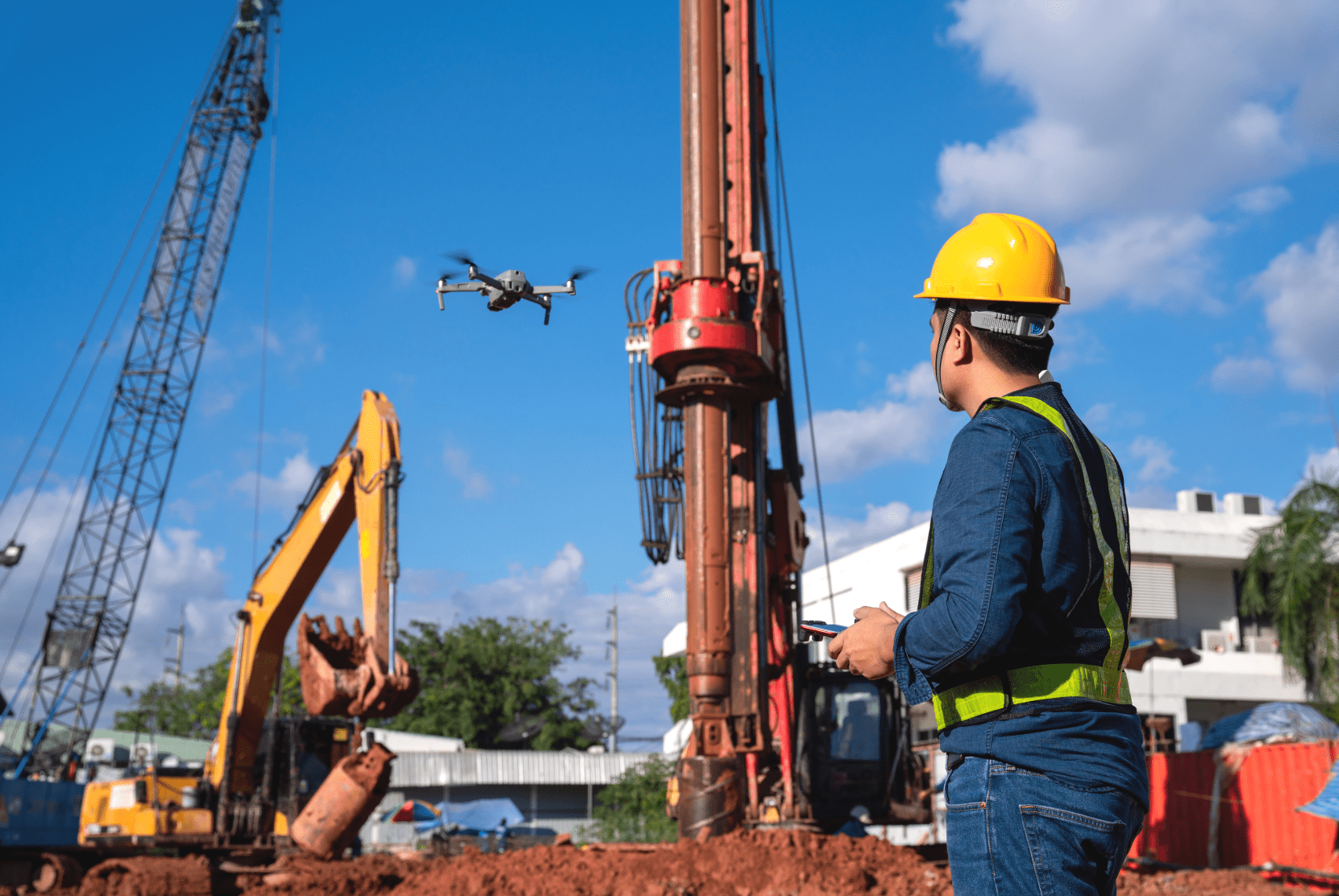Das Ereignis rundum den Frankfurter Flughafen Ende Februar ist kein Einzelfall: Immer wieder gibt es Schlagzeilen wie „Drohne legt Flugbetrieb für mehrere Stunden lahm“. Dazu kommt, dass sich die Regeln für Drohnenpiloten mit der neuen EU-Drohnenverordnung nochmal verschärft haben. Aber worauf müssen Drohnenpiloten wirklich achten und welche Strafen drohen bei Verstößen? In unserer neuen Blogserie führen wir die sechs „schlimmsten“ Vergehen auf und fassen am Ende zusammen, was jeder Drohnenpilot vor Abflug beachten sollte.
In unserem ersten Teil sprechen wir über:
In Teil 2 geht es vielmehr um das Fluggerät und welche Konsequenzen Fliegen ohne Versicherung und ohne Kennzeichnung haben können. In Teil 3 greifen wir die oben geschilderte Problematik des Ereignisses am Frankfurter Flughafen nochmal auf und gehen auf das Fliegen in Flugverbotszonen ein.
Bußgelder z. T. drastisch
Wer sich nämlich nicht an die Verordnung hält, kann mit einem Bußgeld von bis zu 50.000 € rechnen. Wie hoch dieses bei welchem Verstoß tatsächlich ausfällt, lässt sich allerdings (noch) nicht sagen. Es gibt weder Tabellen noch einen Bußgeldkatalog. Dieser könnte aber mit dem deutschen Gesetzesentwurf zur Anpassung an die EU-Drohnenverordnung kommen. Bisher können sich Drohnenpiloten nur durch die Medien an Präzedenzfällen aus den vergangenen Jahren orientieren. In den schlimmsten Fällen wird ein Strafverfahren eingeleitet und es kann zu einer Freiheitsstrafe kommen. Ebenfalls können Punkte in Flensburg und die Entziehung der Fahrerlaubnis die Folgen sein.
Falls Sie sich noch nicht mit der neuen EU-Drohnenverordnung auseinandergesetzt haben und nicht wissen, was es z. B. mit den drei Betriebskategorien auf sich hat, empfehlen wir Ihnen vorab unser White Paper zur EU-Drohnenverordnung 2021 durchzulesen.
Rechtliche Grundlagen
Das Fliegen von unbemannten Fluggeräten unterliegt in Deutschland dem Luftverkehrsgesetz (LuftVG) und der Luftverkehrsordnung (LuftVO). Bei Straftaten wie gefährlichen Eingriffen in den Luftverkehr oder Verletzungen der Privatsphäre kommt auch das Strafgesetzbuch (StGB) ins Spiel. In dem LuftVG ist beispielsweise die Haftungsfrage geregelt. In der LuftVO ist wiederum festgelegt, wo z. B. das Fliegen verboten ist.
Fliegen ohne Führerschein
Der Führerschein für das Befliegen von Drohnen ist eine der wichtigsten Voraussetzungen, die es zu beachten gibt. Falls Sie ohne Führerschein mit Ihrer Drohne fliegen, droht ein hohes Bußgeld von bis zu 50.000 €.
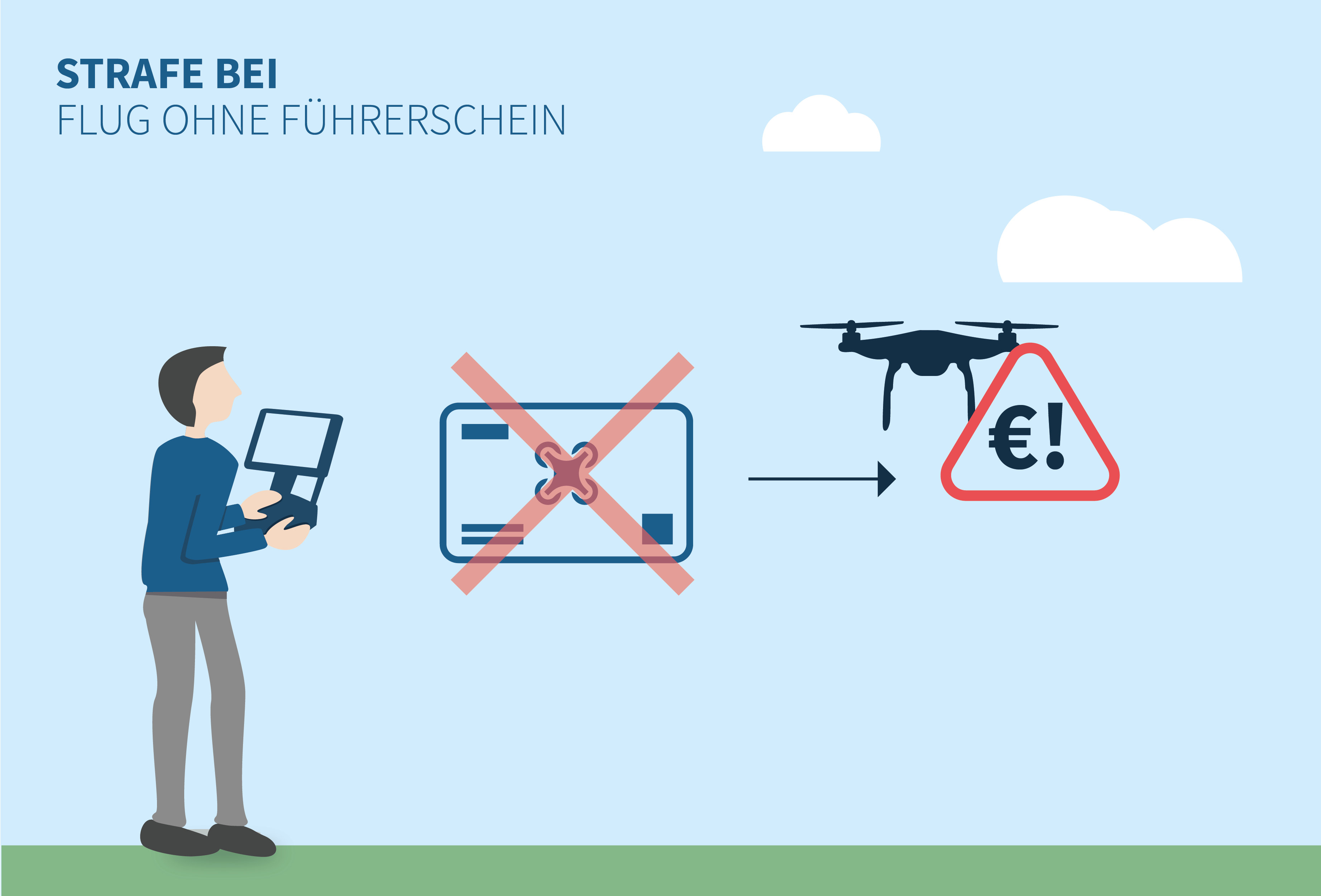
Ohne Führerschein zu fliegen ist nur erlaubt, wenn die Drohne weniger als 250 g wiegt und damit in die Klasse C0 fällt. Ansonsten gilt Folgendes:
EU-Kompetenznachweis
(„Kleiner Drohnenführerschein“)
Verpflichtend für
EU-Fernpilotenzeugnis
(„Großer Drohnenführerschein“)
Verpflichtend für
Den theoretischen Test (40 Multiple-Choice-Fragen) für den EU-Kompetenznachweis können Sie unter https://lba-openuav.de/pruefung/ zurzeit noch kostenlos machen.
Das EU-Fernpilotenzeugnis erfordert noch eine weitere theoretische Prüfung sowie einen praktischen Selbsttest. Dazu hier mehr Informationen.
Über die verschiedenen UAV-Klassen C0-C6 können Sie hier auf unserem Blog nochmal nachlesen.
Fliegen ohne Genehmigung
Drohnen der „offenen“ Betriebskategorie dürfen grundsätzlich ohne Genehmigung fliegen, wenn das Gewicht geringer als 25 kg Startmasse beträgt und während des gesamten Fluges unmittelbarer Sichtkontakt besteht.
Für die Kategorie „speziell“ wird jedoch eine Betriebsgenehmigung, Betriebserklärung oder ein Betreiberzeugnis (Light Unmanned aircraft operator Certificate, LUC) benötigt. In diese Kategorie fallen in erster Linie die gewerblichen Einsätze von Drohnen, d. h. für die gewerbliche Nutzung ist immer eine Genehmigung oder Erklärung notwendig.
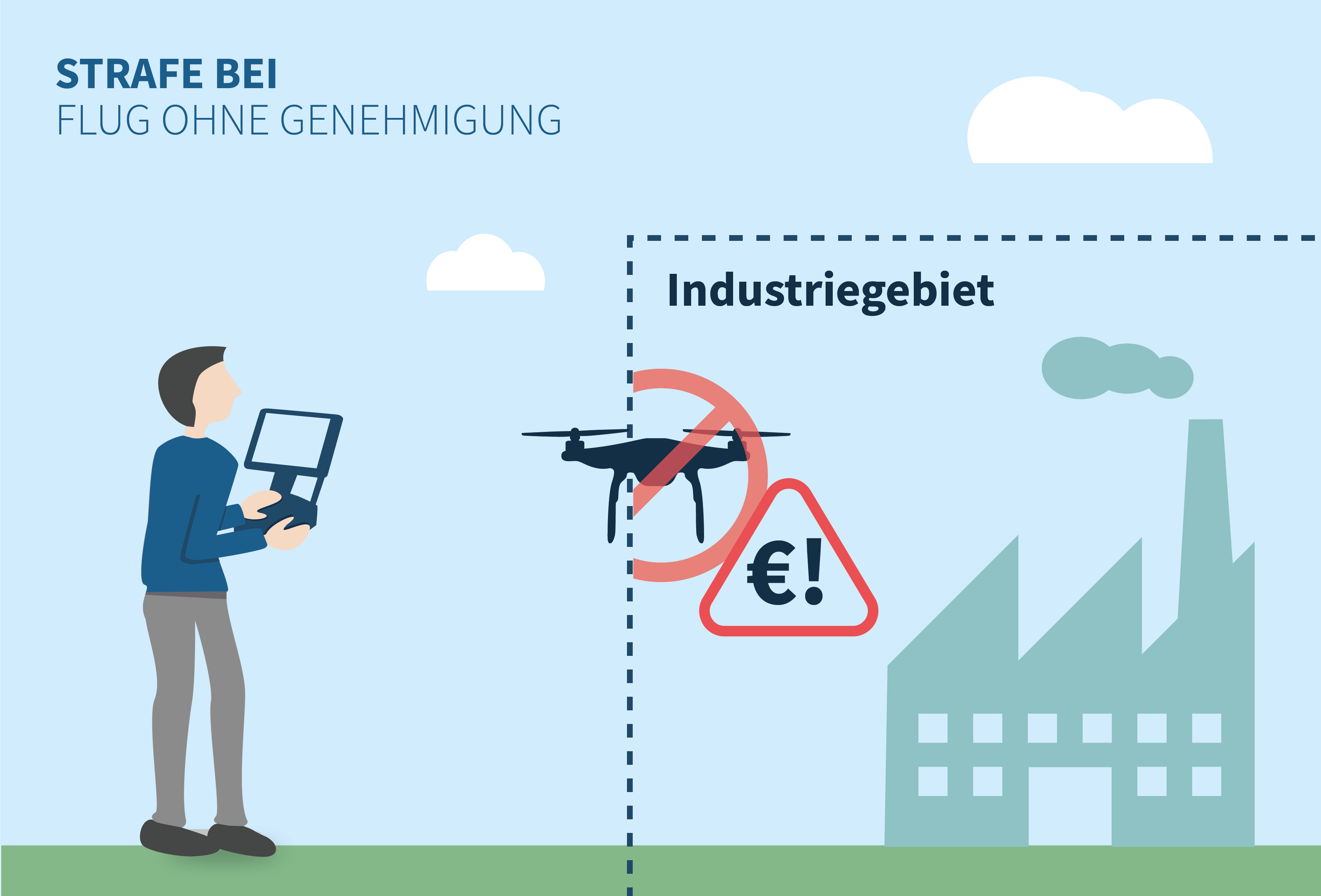
Eine Betriebsgenehmigung ist dabei umfangreicher als eine Erklärung. Eine Erklärung reicht aus, wenn folgende Kriterien erfüllt werden können:
Der Pilot fliegt mit einem UAV mit einer maximalen charakteristischen Abmessung (z. B. Durchmesser) von
- bis zu 3 m in VLOS über einem kontrollierten Bereich am Boden, nicht über Menschenansammlungen,
- bis zu 1 m in VLOS, jedoch nicht über Menschenansammlungen,
- bis zu 1 m in BVLOS, über dünn besiedelten Gebieten,
- bis zu 3 m in BVLOS, über einem kontrollierten Bereich am Boden,
- unter 120 m Höhe und über einem kontrollierten Luftraum (also nicht Lufträume F oder G).
Ein LUC-Zeugnis kann ausschließlich eine juristische Person, z. B. eine Organisation oder ein Unternehmen, beantragen. Das Zertifikat kann mit einer dauerhaften Betriebsgenehmigung gleichgestellt werden.
Auch das Fliegen in der dritten Betriebskategorie „zulassungspflichtig“ erfordert eine Genehmigung, da hier noch strengere Voraussetzungen für die Durchführung eines Fluges gelten.
Die Kosten für die Beantragung können sich je nach Bundesland unterscheiden und können bei der jeweiligen Landesluftfahrtbehörde angefragt werden.
Falls Sie ohne Genehmigung fliegen, drohen Ihnen in jedem Fall sehr viel höhere Kosten in Form von Bußgeldern von bis zu 50.000 €.
Weitere Informationen zu den Genehmigungen und dem LUC-Zeugnis finden Sie hier auf der Seite des Luftfahrt-Bundesamts.
Falls Sie eine Genehmigung benötigen, können Sie gerne unseren Genehmigungsservice nutzen. Ansonsten können Sie diese bei der Landesluftfahrtbehörde des jeweiligen Bundeslandes selbst beantragen.
Nächste Woche erscheint Teil 2 der Blogserie „Strafen vermeiden – Wichtig für Drohnenpiloten“ zum Thema Fliegen ohne Versicherung und ohne Kennzeichnung.
Bis dahin wünschen wir sichere Flüge,
Ihr FlyNex Team
